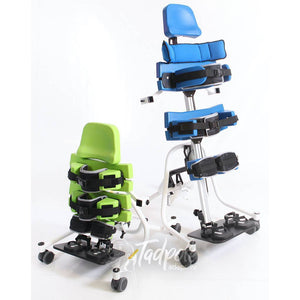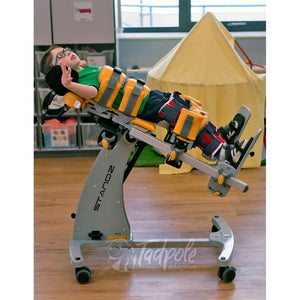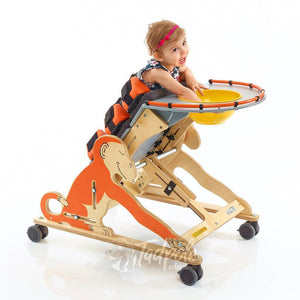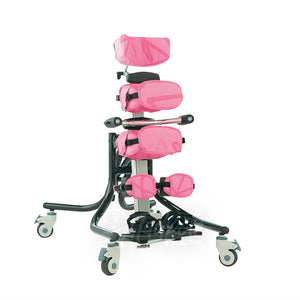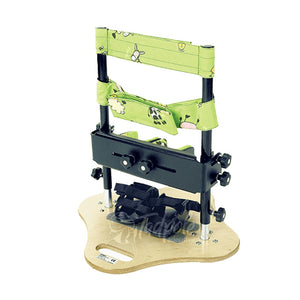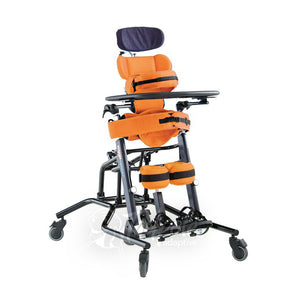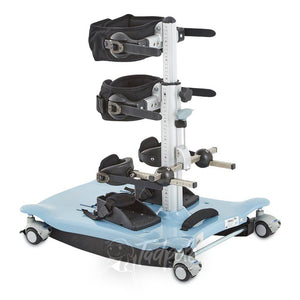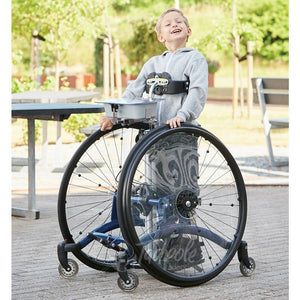SHOWING 22 OUT OF 22 PRODUCTS
About Standers
Standing is an important milestone in a child's development and extremely important as part as ongoing activity for users with mobility issues for all ages. The benefits of standing are countless! In your child's eyes, they can be on the same level as their friends changing how they interact and play, while also creating a positive self-image. In addition, standing builds strong bones, improves flexibility of muscles, can decrease tension and spasms in leg muscles, and can help with breathing, digestion, and even constipation! Everyone is different and may require more or less support to stand. Alignment is very important when standing to protect joints, improve comfort, and get the most of your stander!
Sit to Stand Standers
The user transfers onto the stander in a seated position. Feet and knees are blocked with pads, and various options for hip/trunk/head support can be used. The seat is pumped up moving the user from a seated position to a standing position. A tray is often used for chest support and activity. The person standing should have head control and some trunk control.
Prone Standers
Prone standers support the user from their stomach side. They will always be in a standing position with the stander angling from laying down to straight upright. The user should be able to hold their head up but require significant trunk support to stand. Prone standers are good for head control development and for stretching tight muscles.
Supine Standers
Supine standers support the user from their back side. Supine standers provide the most positioning support and move from totally flat to completely upright. Users with poor head and trunk control should use a supine stander. Many standers can be configured both Prone and Supine.
Dynamic/Mobile Standers
Users who have the ability to push a manual wheelchair can benefit from a mobile stander. An upright/prone stander with oversized wheels allow children to move around the room. Good head / trunk control and upper body control required.
Combination Standers/MPS
Standers that can be configured in multiple forms fall into this category. Prone, Supine, Sit to Stand, and Vertical Standers that are interchangeable are listed here. Good choices for schools and therapy departments.
Vertical Standers
Vertical standers provide support similar to prone standers but they do not lean forward. Vertical standers take up the least amount of space. Users should be able to hold their head up against gravity for more than a few minutes to use a vertical stander.
Explore this category more and remember, if you need help fundraising, consider using MobilityFunder™, our Crowdfunding platform that is free to use, and has no extra fees.
Need some advice or help with your decision? Check out the entry from ’The Journal’, "How to Choose the Right Special Needs Stander". Or, reach out to us if you need help deciding (these can be tricky).






